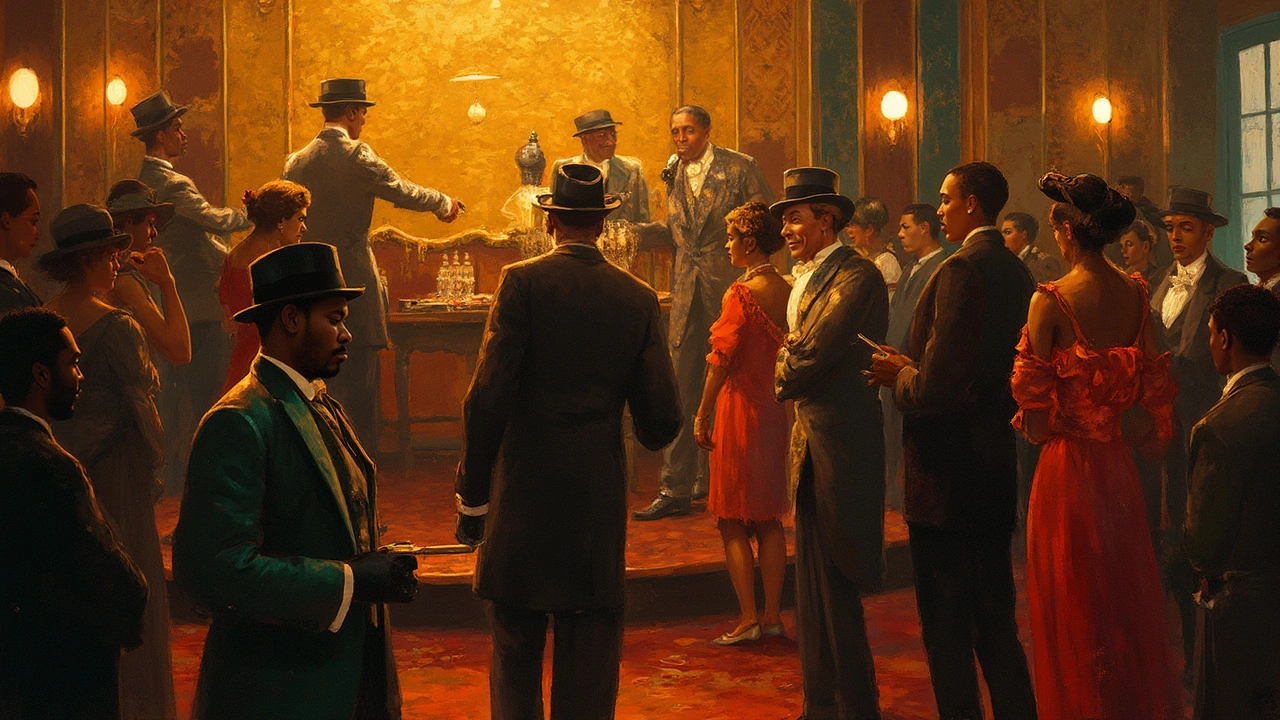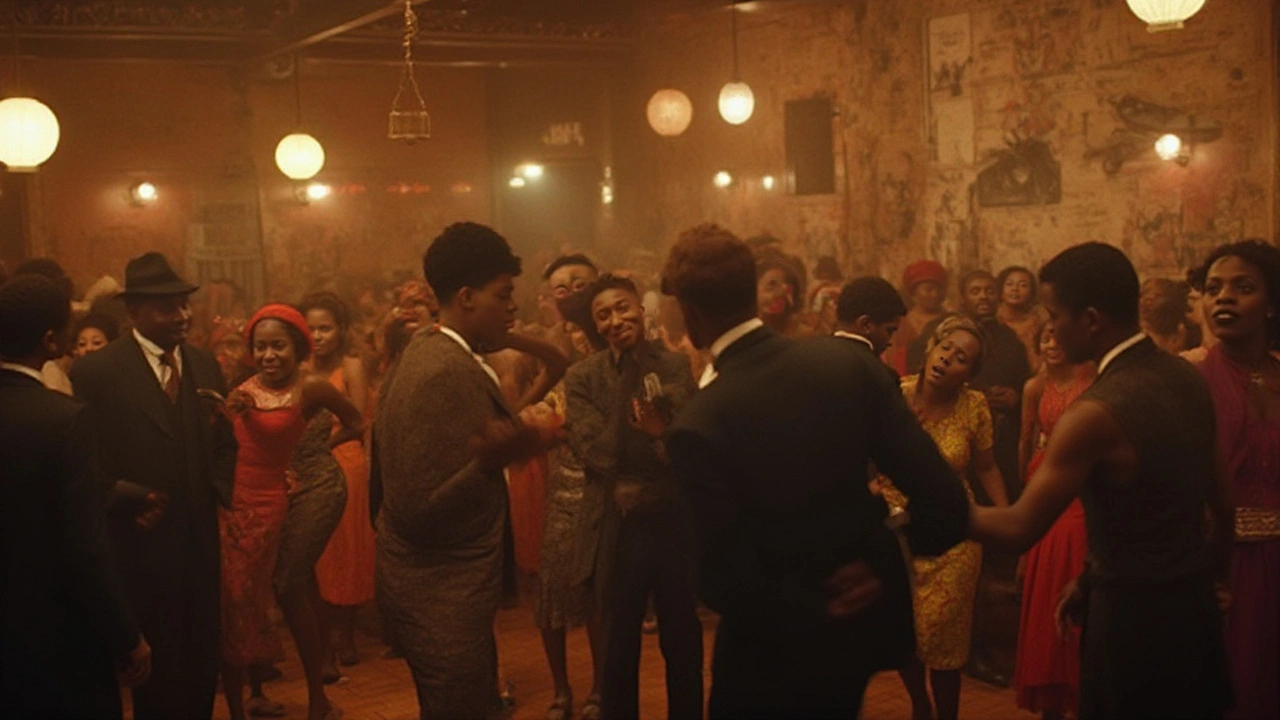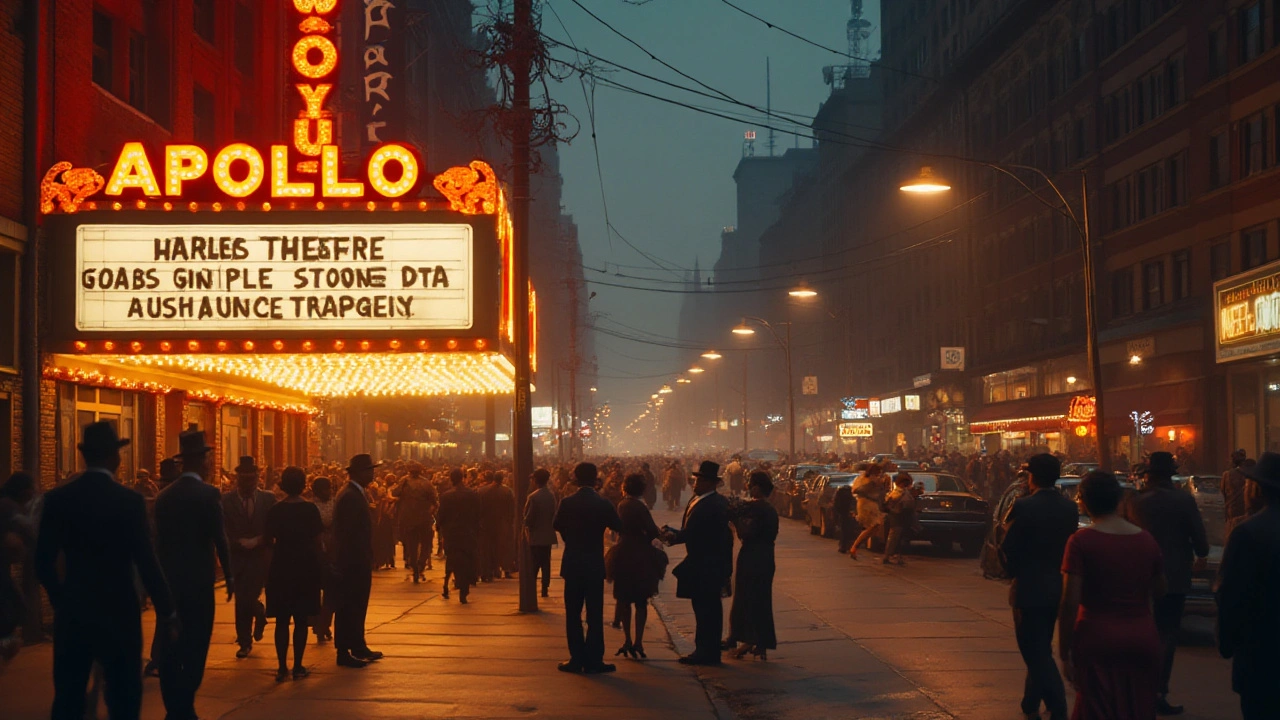Jazz in Art: How Rhythm and Improvisation Shape Visual Work
Jazz didn’t just change music. It rewired how artists think about rhythm, chance, and energy on canvas. In 1940s New York, musicians and painters shared clubs, records, and ideas—so the way a trumpet phrases a line shows up in brushwork or collage. If you want to see jazz in painting, look for movement, unexpected accents, and a loose sense of timing.
How artists borrow from jazz
Some artists wear jazz on their sleeve. Romare Bearden used collage to echo jazz structure—layers, cuts, and sudden shifts like a solo. Stuart Davis painted flattened urban rhythms that feel syncopated, almost like bebop on canvas. Jackson Pollock’s action paintings often mirror improvisation: chance drips, repeated gestures, a tempo you can almost hear. Basquiat mixed raw lines and shouted motifs like a gritty jazz club set.
Spotting jazz influence is about pattern and surprise. Repetition creates a beat. Varied marks or color hits act like syncopation. Big shapes set the downbeat; tiny, sharp marks are the offbeat. When an artwork feels alive and unpredictable—when the eye keeps finding something new—that’s a jazz heartbeat.
Practical ways to add jazz energy to your work or space
If you make art, try this: pick a jazz track and paint in sections timed to the music—change strokes every 30 seconds. Let solos guide smaller details. Limit your palette to two dominant colors and one accent; that accent functions like a trumpet call. Build compositions in layers, then cut into them (or scrape them back) to create call-and-response between elements.
For designers or homeowners, add jazz by mixing vintage posters, vinyl covers, and bold patterns. A single dramatic poster—say a Harlem club photo or a mid-century album cover—can set a rhythm for the room. Use warm light and textured fabrics to mimic the cozy club feel. In graphic work, try uneven grids and off-kilter typography to create a syncopated visual beat.
Want a quick exercise? Make a small collage from old program flyers, record sleeves, and found paper. Don’t plan too much—let pieces fall where they feel right. That improvisational habit trains you to accept surprises and find visual solos that elevate the whole piece.
Finally, look beyond obvious links. Movements like Abstract Expressionism, the Harlem Renaissance, and even certain design trends borrowed jazz’s attitude: risk, voice, and timing. If you pay attention, jazz will teach you to make work that breathes, pushes, and surprises—just like a great solo does.



